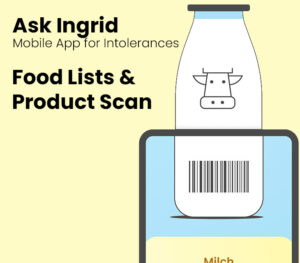In the latest newsletter, I addressed this question and presented a few chocolatey or sweet alternatives to the Easter bunny. You can subscribe to the newsletter here. We send it out about 10 times a year, so don’t worry about spam! And yes, there are now low-fructose, low-histamine and lactose-free alternatives.
How did we come to eat chocolate Easter bunnies in the first place? This question was neglected in the newsletter, so I decided to write a blog about it.
Why is the Easter bunny our Easter symbol?
It is often said that a supposed Germanic goddess of spring called Ostara gave Easter its name. But this is controversial among experts. Less controversial is the fact that the hare is a fertile animal and gives birth to its first young in spring, around Easter. And in spring, after the barren time of winter, fertility rituals and festivals are very popular. Because nature is awakening again, the round dance of sowing, tending, harvesting and eating begins anew. In many pre-medieval and early medieval cultures, the hare was also a symbol of Jesus Christ. And Christians celebrate his resurrection at Easter.

So we don’t know exactly. But there are many indications that link the hare as a symbol with spring, awakening and the Christian Easter festival.
Why are there chocolate Easter bunnies?
This question cannot be answered definitively, but there is much better evidence. Especially because these sweet gifts were only created in the middle of the 19th century. Incidentally, the Easter bunny bringing eggs is also relatively new.
The invention of the Easter bunny
It was not until the second half of the 17th century that the urban Protestant bourgeoisie in Germany began this tradition. The Easter bunny as we know it today is therefore a German invention. In the 19th century, the Easter bunny became established in German-speaking and European countries. He appears in nursery rhymes and children’s books, on postcards (which were also relatively new) and in publications. However, we must not believe that the Easter bunny is spread worldwide. In other cultures, other animals or symbolic figures bring gifts or represent rebirth during this Christian festival. Blue stags or pigeons are just two that I would like to mention here.
The invention of chocolate
Chocolate was very expensive and not available to everyone. It was also relatively bitter and runny. It was not until around 1850 that solid chocolate was invented in England. But this did not last long. The Swiss Nestlé invented milk powder in 1875, which made chocolate much more durable. A few years later, Lindt, also Swiss, invented conching. This process turns chocolate into a softer, melt-in-the-mouth product. In other words, what we know today. From around 1900, chocolate was available as a mass product. With industrialization, the chocolate industry was built up and chocolate became sweeter and cheaper. German inventor came up with the idea of making light chocolate Easter bunnies. The revolutionary thing at the time was the development of hollow figures, which were created using a spinning technique. Liquid chocolate is spun into the mold. This made it possible to produce light and stable chocolate figures. And so we know that chocolate Easter bunnies have only been on sale since around 1950. The chocolate Easter bunnies are therefore a pan-European co-production, if you like.
For people with intolerances
Of course, these standard chocolate animals are of limited or no use to us. In yesterday’s newsletter, I therefore introduced you to a few current low-fructose, lactose-free and now even histamine-free Easter bunnies. Even though we’re not normally fans of ready-made products, it’s nice to have alternatives, especially at Christmas or Easter. You can find these products in the usual online stores, but lactose-free or vegan versions can now also be found in the supermarket around the corner.


